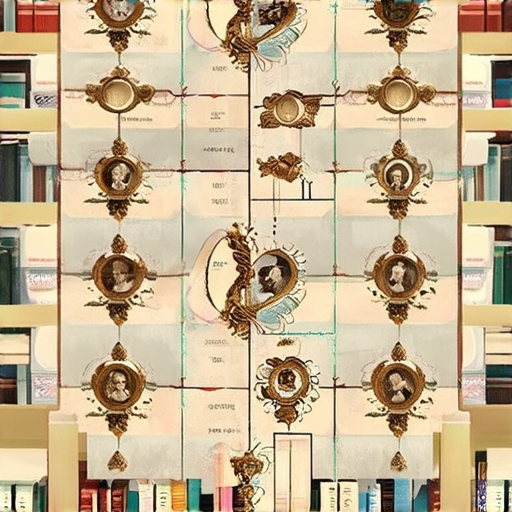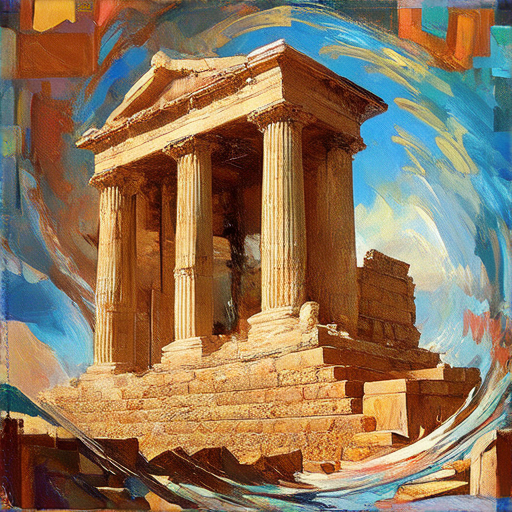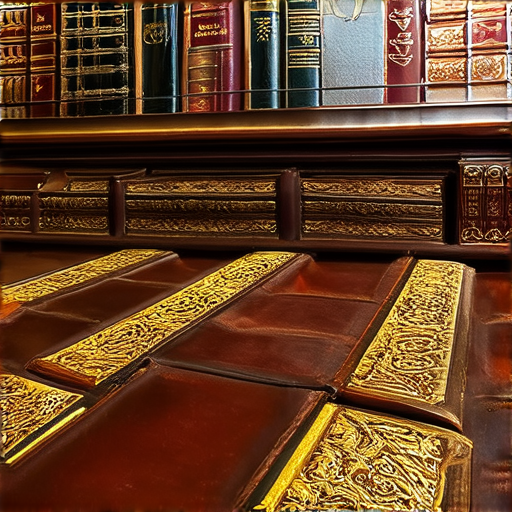Delving into the realm of art history, one discovers a rich tapestry woven from the threads of creativity, innovation, and cultural expression. Spanning centuries, continents, and mediums, the evolution of art has been shaped by the masterful brushstrokes of visionaries who dared to challenge conventions and push boundaries. From the early Renaissance masters to the avant-garde movements of the 20th century, each era has left an indelible mark on the art historical landscape.

The Art History
The art history encompasses a vast array of styles, movements, and techniques employed by artists across various cultures and time periods.
-
Prehistoric Era:
- Cave paintings and petroglyphs showcase early human expression and storytelling.
- Early forms of sculpture and pottery demonstrate primitive craftsmanship.
-
Classical Period:
- Greek and Roman art exemplify idealized proportions and classical ideals.
- Architectural achievements, such as the Parthenon and Colosseum, demonstrate engineering prowess.
-
Renaissance and Baroque:
- Revival of classical techniques and subject matter marks the Renaissance.
- Caravaggio and Rembrandt push the boundaries of light and shadow in the Baroque era.
-
Modern and Contemporary:
- Impressionism, Expressionism, and Cubism introduce new ways of capturing reality.
- Surrealism, Abstract Expressionism, and Pop Art continue to challenge traditional notions of art.
Throughout history, artists have been driven by a desire to express themselves, tell stories, and capture the essence of their surroundings.
From ancient civilizations to modern-day masters, the art history is a rich tapestry of creativity and innovation.
As an artist, I draw inspiration from the past, pushing the boundaries of what is possible and exploring new ways to express myself.
Whether through painting, sculpture, photography, or other mediums, art continues to evolve and captivate audiences worldwide.
At Artful Journey , we celebrate the diversity and richness of the art history, providing a platform for artists to share their work and connect with like-minded individuals.
We believe that art has the power to transform lives, spark imagination, and bring people together.
Join us on this artistic journey, as we explore the infinite possibilities of creativity and self-expression.
What Do You Study in Art History?
In art history, you study the development of visual arts, including paintings, sculptures, engravings, and drawings, in relation to historical events and eras.
-
Art Movements
- Renaissance art
- Baroque art
- Impressionism
- Cubism
- Surrealism
-
Artistic Techniques
- Painting techniques
- Sculpture techniques
- Printmaking techniques
- Photography techniques
-
Art Historical Periods
- Prehistoric art
- Ancient Greek and Roman art
- Medieval art
- Renaissance art
- Modern art
-
Art Criticism and Theory
- Formal analysis
- Contextual analysis
- Theory and criticism
As an art history student, you’ll have the opportunity to explore these topics in-depth, developing a deeper understanding of the cultural, social, and historical contexts that shape the visual arts.
Some notable institutions offering art history degree programs include:
- The Metropolitan Museum of Art
- Minneapolis Institute of Art
- J. Paul Getty Trust
These institutions offer a wealth of resources and opportunities for students to engage with art history, from museum collections and exhibitions to academic programs and research initiatives.
By studying art history, you’ll gain a unique perspective on the world around you, developing critical thinking, analytical, and communication skills that can be applied to a wide range of careers.

Three Periods of Art History
As an artist, understanding the different periods of art history can help you appreciate the evolution of styles and techniques.
-
Renaissance Period (14th-17th century)
- The Renaissance marked a significant shift towards realism and humanism in art.
- Characterized by the use of perspective, sfumato, and chiaroscuro.
- Notable artists include Leonardo da Vinci, Michelangelo, and Raphael.
-
Baroque Period (17th-18th century)
- The Baroque period was characterized by dramatic lighting, intense emotions, and highly ornamented decoration.
- Notable artists include Caravaggio, Rembrandt, and Vermeer.
-
Modern Period (19th-20th century)
- The Modern period saw a rejection of traditional techniques and forms.
- Characterized by the rise of abstract expressionism, cubism, and surrealism.
- Notable artists include Vincent van Gogh, Pablo Picasso, and Salvador Dali.
Understanding these periods can help you appreciate the diversity and richness of art history.

Is Art History a Hard Class?
As an artist and art enthusiast, I can attest that studying art history can be a rewarding and enriching experience.
- The course covers a vast array of styles, movements, and periods, from ancient civilizations to modern-day artists.
- You’ll have the opportunity to analyze and interpret artworks, understanding the historical context, cultural significance, and artistic techniques employed by the creators.
- While memorization and analysis can be challenging, the rewards lie in gaining a deeper appreciation for the art world and its many wonders.
Why AP Art History Can Be Rewarding
AP Art History offers a unique chance to explore the world of art, delving into the stories behind famous paintings, sculptures, and other creations.
- By examining the artistic process, you’ll gain insight into the creative decisions made by artists and how these choices reflect the social, political, and cultural contexts of their time.
- You’ll develop critical thinking skills, learning to analyze and evaluate artworks based on their composition, color palette, and overall impact.
- Through this course, you’ll become familiar with various art movements, styles, and periods, broadening your understanding of the art world and its many facets.
What to Expect from AP Art History
When taking AP Art History, you can expect to engage with a diverse range of topics, from Renaissance masterpieces to contemporary installations.
- Class discussions and debates will allow you to share your perspectives and learn from your peers, fostering a collaborative environment that encourages growth and exploration.
- Assignments and projects will challenge you to apply theoretical concepts to real-world examples, helping you develop a nuanced understanding of art history and its many complexities.
- Throughout the course, you’ll have access to a wealth of resources, including online lectures, videos, and interactive tools, which will aid in your studies and deepen your engagement with the material.
Conclusion
In conclusion, while AP Art History may present challenges, the rewards far outweigh the difficulties.
By embracing the course’s rich offerings and engaging with the material in a thoughtful and reflective manner, you’ll emerge with a newfound appreciation for the art world and its many wonders.
So, don’t be intimidated – take the leap and embark on this fascinating journey through art history!
Is it Hard to Get a 5 on AP Art History?
To achieve a 5 on the AP Art History exam, it’s essential to develop a solid understanding of the course material, including the required works of art, historical periods, and critical thinking skills.
- Master the Required Works: Familiarize yourself with the 250 artworks listed in the course framework, focusing on their style, technique, and cultural significance.
- Develop Critical Thinking Skills: Practice analyzing and interpreting artworks through essays, discussions, and self-reflection, honing your ability to identify themes, motifs, and artistic movements.
- Stay Organized and Focused: Create a study schedule, review notes regularly, and stay up-to-date with course materials to ensure a thorough understanding of the subject matter.
Tips for Success:
- Start Early: Begin studying well in advance of the exam date to allow sufficient time for review and practice.
- Join a Study Group: Collaborate with classmates to discuss challenging topics, share knowledge, and stay motivated.
- Seek Additional Resources: Utilize online resources, textbooks, and educational videos to supplement your learning and deepen your understanding of the subject matter.
Additional Tips:
When preparing for the AP Art History exam, remember to:
- Practice Under Timed Conditions: Simulate the actual exam experience by completing timed practice tests to improve your speed and accuracy.
- Review Past Exams: Analyze past exams to understand the types of questions asked, the level of difficulty, and the required knowledge.
- Stay Calm and Confident: Manage your stress levels and maintain confidence in your abilities to perform well on the exam.

Does Art History Pay Well?
As an artist and art enthusiast, I’m often asked whether a career in art history can be financially rewarding.
- Salary Range: According to recent data, the average salary for an art historian in the United States ranges from $72,000 to $85,000 per year, with top earners making up to $89,000 annually.
- Job Outlook: While job opportunities may vary depending on factors like location and industry, the demand for art historians continues to grow, driven by increasing interest in cultural heritage and museum exhibitions.
Breaking Down the Numbers:
- Median Salary:** $77,500
- 25th Percentile:** $72,000
- 50th Percentile:** $77,500
- 75th Percentile:** $82,500
- 90th Percentile:** $89,000
Industry Insights:
Museums, galleries, and auction houses are among the primary employers of art historians, offering a range of roles from curatorial positions to conservation and education.
- Museum Careers: Many museums hire art historians to work on exhibitions, collections management, and educational programs.
- Auction Houses: Some auction houses employ art historians to authenticate and appraise artworks, as well as provide expertise to clients.
- Gallery Roles: Galleries often hire art historians to assist with exhibition planning, artist research, and sales.
Education and Training:
To pursue a career in art history, it’s essential to have a strong foundation in art historical studies, as well as skills in research, writing, and communication.
- Bachelor’s Degree: A bachelor’s degree in art history or a related field is typically required for entry-level positions.
- Master’s Degree: A master’s degree can be beneficial for advanced roles or those seeking specialized knowledge.
- Professional Certifications: Consider obtaining certifications like the Certified Art Historian (CAH) designation to demonstrate expertise and commitment to the field.
Conclusion:
In conclusion, a career in art history can be financially rewarding, with median salaries ranging from $72,000 to $85,000 per year. By understanding the job market, industry insights, and education requirements, aspiring art historians can navigate this exciting and challenging field.

0 Comments